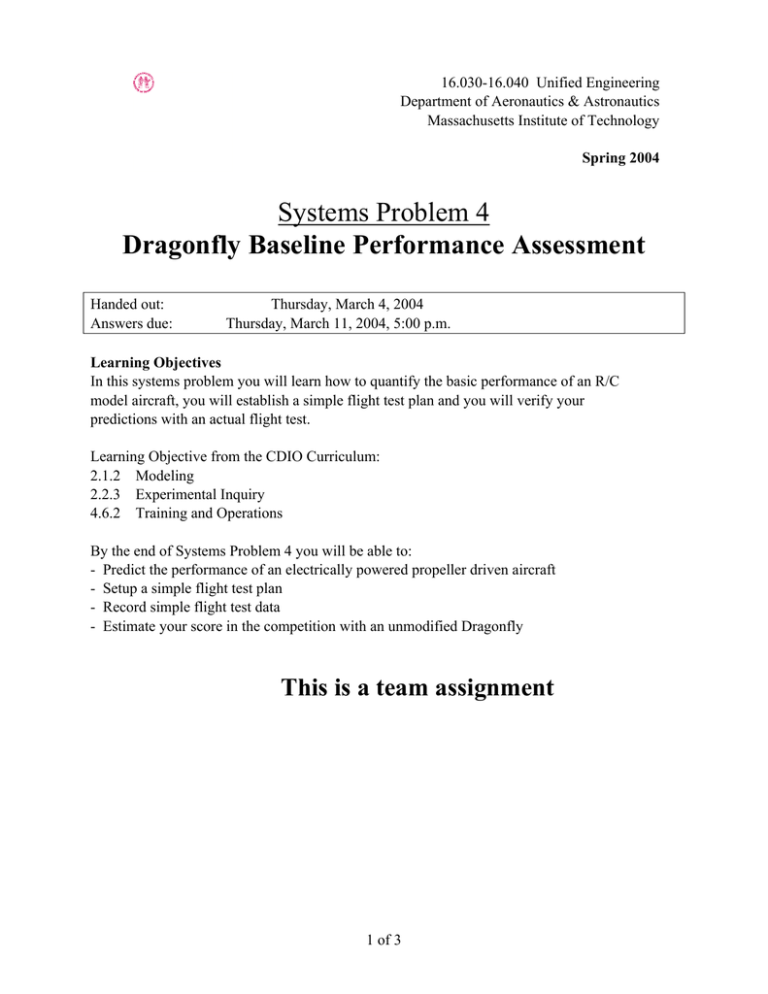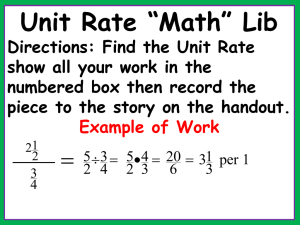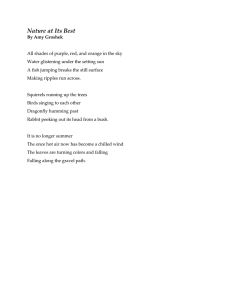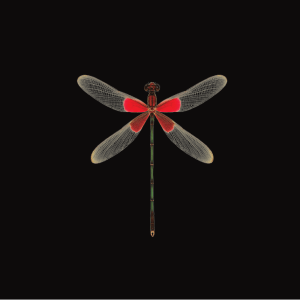16.030-16.040 Unified Engineering Department of Aeronautics & Astronautics
advertisement

16.030-16.040 Unified Engineering Department of Aeronautics & Astronautics Massachusetts Institute of Technology Spring 2004 Systems Problem 4 Dragonfly Baseline Performance Assessment Handed out: Answers due: Thursday, March 4, 2004 Thursday, March 11, 2004, 5:00 p.m. Learning Objectives In this systems problem you will learn how to quantify the basic performance of an R/C model aircraft, you will establish a simple flight test plan and you will verify your predictions with an actual flight test. Learning Objective from the CDIO Curriculum: 2.1.2 Modeling 2.2.3 Experimental Inquiry 4.6.2 Training and Operations By the end of Systems Problem 4 you will be able to: - Predict the performance of an electrically powered propeller driven aircraft - Setup a simple flight test plan - Record simple flight test data - Estimate your score in the competition with an unmodified Dragonfly This is a team assignment 1 of 3 Discussion So far we have focused on understanding systems as a collection of people, product, and procedures to achieve a set of functional requirements. Now the fun begins as we focus in on what it takes to analyze and develop a key product (hardware) for the Unified Aerial Competition, the aircraft! In SP2 you devised a test plan. In SP4 you will execute your test plan and report your results against expected and predicted values. Assignment This is a group assignment. Division of labor will be key to completing this system problem within the allotted time budget. Execute your test plan and report against the data requested below. You will have to estimate parameters such as L/D and CDO by performing some independent research. Deliverables 1. From your measurements of the velocity of the Dragonfly in steady level flight, estimate the thrust required. (Anderson, Aircraft Performance and Design, Section 5.3. 2. Plot the thrust required curve for the Dragonfly (Anderson, Section 5.3) and indicate the operating point found in (1) on your graph. Discuss your findings. 3. Draw the thrust available curve (Anderson, Section, 5.5) on your graph from (2) and indicate the maximum velocity of the Dragonfly. Compare to measured maximum velocity of the Dragonfly. 4. Draw the efficiency and output power curves for the Dragonfly’s Speed 400 motor. 5. Draw the power required and power available graphs for the Dragonfly on one single graph. (Anderson, Section 5.6) Assume the propeller efficiency is 80%. Make intelligent commentary. 6. Estimate the stall speed of the Dragonfly (experimentally or otherwise). 7. Estimate the minimum turn radius of the Dragonfly using engineering fundamentals (See Anderson, Section 6.21). Compare the calculated minimum turning radius to that you measure in your test. 8. Estimate the ground roll of the Dragonfly using engineering fundamentals (See Anderson, Section 6.7). Compare calculated ground roll with that you measure in your test. 9. Compare measured and estimated performance and comment on the differences. Present these results in a format suitable for the management. 10. Record and report each team member’s work assignment, work output, and time spent for this assignment. 2 of 3 Systems Problem 4 Dragonfly Baseline Performance Assessment Handed out: Answers due: Thursday, March 4, 2004 Thursday, March 11, 2003, 5:00 p.m. Group Number: Name Time Spent 3 of 3






